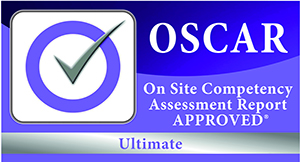NVQ DIPLOMA IN PLASTERING (CONSTRUCTION)
REFERENCE CODE
601/4322/8
COURSE LEVEL
NVQ Level 3
THIS COURSE IS AVAILABLE IN

Course Overview
Who is this qualification for?
This qualification is aimed at those who are involved in Plastering activities in the workplace. It is not expected that candidates working in this industry all do the same activities so the qualification has been developed to allow opportunities for those carrying out work in either solid or fibrous Plastering. Those taking the qualification must also prove knowledge and competence in working at heights, calculating quantities and wastage and the use of powered and hand tools and equipment. All work completed must be done in accordance with Building Regulations and Industry recognised safe working practices, including the disposal of waste.
The qualification is structured to ensure that there is a high degree of flexibility within the units available and will allow employees from companies of all sizes and specialisms equal opportunity to complete. See the qualification Rules of Combination for more details on the specific skills required.
In addition to this qualification there is a Level 2 qualification in Plastering and a number of other Construction and Construction related qualifications available through Oscar Onsite Academy.
What is required from candidates?
GQA qualifications are made up of a number of units that have a credit value or credits. This qualification consists of 4 mandatory units and 2 pathways, Solid and Fibrous. The qualification mandatory units have a total credit value of 31 credits-in addition the Solid plastering pathway requires achievement of 54 credits from the pathway mandatory units and a minimum of 14 credits required from the pathway optional group, giving a total of 99 credits. The fibrous plastering pathway requires achievement of all of the qualification mandatory units (31 credits) 45 credits from the pathway mandatory units and a minimum of 16 credits required from the pathway optional group a total of 92 credits for this pathway.
The units are made up of the things those working in these job roles need to know to be able to do to carry out the work safely and correctly. These are called Learning Outcomes, and all must be met to achieve the unit.
Mandatory units Level Credit
Confirming Work Activities and Resources for an Occupational Work Area in the Workplace
Developing and Maintaining Good Occupational Working Relationships in the Workplace
Confirming the Occupational Method of Work in the Workplace
Conforming to General Health, Safety and Welfare in the Workplace
Additional units
A/600/7882 Producing Granolithic Paving Work in the Workplace
Producing Specialised Plasterer’s Surfaces in the Workplace 3 29
Pathway C – Solid – Pathway C1 – Solid Mandatory Units (54 credits)
Producing Complex Internal Solid Plastering Finishes in the Workplace 3 27
Producing Complex External Rendering Finishes in the Workplace 3 27
Pathway C2 – Solid Optional Units – candidates must achieve a minimum of 14 credits
Installing Direct Bond Dry Linings in the Workplace
Installing Mechanically Fixed Plasterboard in the Workplace
Running In-situ Mouldings in the Workplace
Pathway D – Fibrous – Pathway D1 – Fibrous Mandatory Units (45 credits)
Producing Complex Plasterwork Moulds in the Workplace
Summary of the: GQA LEVEL 3 NVQ DIPLOMA IN PLASTERING (CONSTRUCTION)
Installing Complex Fibrous Plaster Components in the Workplace 3 18
Pathway D2 – Fibrous Optional Units – candidates must achieve a minimum of 16 credits
Running In-situ Mouldings in the Workplace 3 25
Repairing Complex Fibrous Plaster Components in the Workplace 3 16
Assessment Guidance
Evidence should show that you can complete all of the learning outcomes for each unit being taken.
Types of evidence:
Evidence of performance and knowledge is required. Evidence of performance should be demonstrated by activities and outcomes, and should be generated in the workplace only, unless indicated under potential sources of evidence (see below). Evidence of knowledge can be demonstrated though performance or by responding to questions.
Quantity of evidence:
Evidence should show that you can meet the requirements of the units in a way that demonstrates that the standards can be achieved consistently over an appropriate period of time.
Potential sources of evidence:
Suggested sources of evidence are shown above, these can be supplemented by physical or documentary evidence, e.g.
- Accident book/reporting system
- Notes and memos
- Safety record
- Telephone/e-mail records
- Training record
- Customer and colleague feedback
- Audio evidence
- Records of equipment and materials
- Witness testimonies
- Work records
- Photographic/ video evidence
Please Note that photocopied or downloaded documents such as manufacturers or industry guidance, H&S policies, Risk Assessments etc, are not normally acceptable evidence for qualifications unless accompanied by a record of a professional discussion or Assessor statement confirming candidate knowledge of the subject. If you are in any doubt about the validity of evidence, please contact Oscar Onsite Academy
Apply Now
Sound like the Apprenticeship for you? Why not fill in our online application form and we can start searching for your perfect Apprenticeship vacancy
Apply Now

